Refectories and Last Supper Paintings in Florence
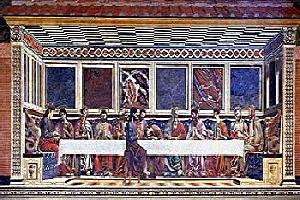
Andrea del Castagno - Ultima Cena
The first Renaissance refectory in Florence is the one belonging to the Benedictine nuns of Sant`Apollonia, created around 1445 in one of the most florid periods the convent. The end wall of the refectory (9.75x9.10 m) was decorated with frescoes, although these were never discovered due to the nuns` strict enclosure. The suppression of the convent in 1860 revealed the existence of only one fresco representing the Last Supper (the upper section had been whitewashed), which was initially attributed to Paolo Uccello and then to the real author Andrea del Castagno (1421-1457), who worked on it after his return from Venice in 1444. Other three frescoes were discovered above this one, representing respectively the Resurrection, Crucifixion and Entombment of Christ. At the time of the restoration in 1952, the three frescoes were removed to be preserved, thus allowing the recovery of the splendid smopites.
Cenacolo di Ognissanti
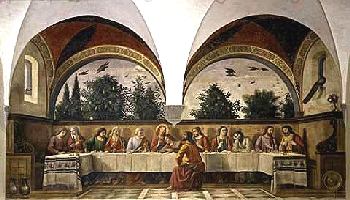
Domenico Ghirlandaio - Ultima Cena
The large refectory of the church of Ognissanti is located between the first and second cloister of the old convent of the Umiliati (Humiliated). The room on the opposite wall gives access to a splendid stone door in pietra serena, with two basins, built in 1480, on each side. The niches are decorated with two frescoes referring to water: Sarah at Jacob `s pit and Mosed who make water gush from the rock, two 17th century works by Giuseppe Romei. The central fresco, which entirely covers the wall (8.10 x 4 m), is the work of Domenico Ghirlandaio (1449-1494), who produced with this work one of the best examples of his art, representing a serene yet dramatic episode of the Last Supper. The apostles are painted in the moment in which Jesus announces that one of them will betray him. Following the requests of the monks who commissioned the painting, Ghirlandaio picked out a large number of apparently decorative details, which are in reality a precise symbolic reference to the drama of the Passion and Redemption of Christ, as for instance the evergreen plants, the flight of quails, the oranges, the cherries, the dove and the peacock. By being a separate fresco, it can be compared to the style of the sinopite on the left wall.
Cenacolo di San Salvi
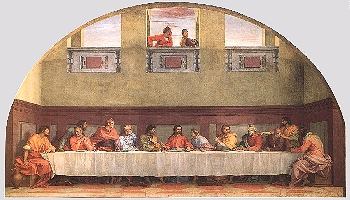
Andrea del Sarto - Ultima Cena
Since 1981 some of the restored rooms of the former Vallombrosan convent of S. Salvi are the seat of the Museum of the Cenacolo of Andrea del Sarto, named after the famous fresco painted by this artist (1486-1530) on one of the walls of the refectory. The work (5.25x8.71 m) was completed between 1526 and 1527 and spared by miracle during the Siege of Florence of 1530. It represents a particularly fine period of the art of Andrea, that has left in this location other masterpieces of his work. The fresco is placed under a large arch containing painted medallions representing the Trinity and the four saints protectors of the Vallombrosan order. This is not the only work of art preserved in the museum, which displays in a vast gallery in front of the Lavabo Room, important works by 16th century artists, like Giorgio Vasari, Ridolfo del Ghirlandaio, Pontormo and Raffaellino del Garbo. The museum also exhibits some fragments of the funeral monument dedicated to S.Giovanni Gualberto, sculptured for Convent of Passignano by Benedetto da Rovezzano between 1507 and 1513.
Cenacolo di Fuligno
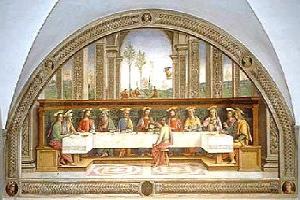
Perugino - Ultima Cena
The Cenacolo is situated in the former convent of the Sisters of Foligno, transformed into a "Conservatory for poor and honest girls" in 1980 after the transfer of the nuns. The fresco (4.40x8 m) was found in 1845 and initially attributed to Raphael, although today`s art critics agree that the work is to be attributed to one of the pupils of Pietro Vannucci known as II Perugino (1445/50-1523), who painted it around 1493-96. Critics have also suggested that the work replaces a previous fresco of the same subject painted by Neri di Bicci (1419-1491). The fresco can be considered one of the most important examples of the Umbrian culture in Florentine Renaissance. The Refectory preserves also some frescoes by Bicci di Lorenzo (1429) removed from other parts of the convent ..... from Museums and Galleries of Florence and surroundings ( Apt - Florence )
Cenacolos ... More information ..
Cenacoli
Our most requested apartments in the Florence historical centre:
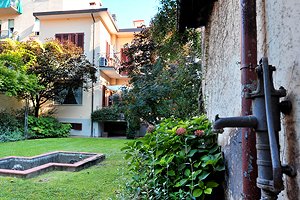 Holiday apartments in pretty villa on the southern outskirts of Florence, in the vicinity of Piazzale Michelangelo. Accommodation for groups of 4/6/8/10/12 people. Air conditioning, Internet connection. Just a few minutes from Florence historical centre.
More details
Holiday apartments in pretty villa on the southern outskirts of Florence, in the vicinity of Piazzale Michelangelo. Accommodation for groups of 4/6/8/10/12 people. Air conditioning, Internet connection. Just a few minutes from Florence historical centre.
More details
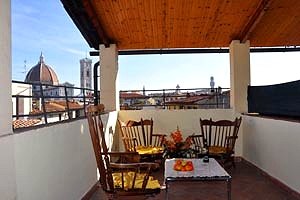 Beautiful apartment sleeping 6+2 in Florence historic centre, at a stone`s throw from Santa Maria Novella railway station. Air conditioning, Internet connection and panoramic balcony with view over the Duomo and the Medici Chapels.
More details
Beautiful apartment sleeping 6+2 in Florence historic centre, at a stone`s throw from Santa Maria Novella railway station. Air conditioning, Internet connection and panoramic balcony with view over the Duomo and the Medici Chapels.
More details
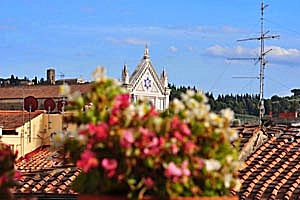 Apartment sleeping 2+1 in the heart of Florence historic centre, in the district of Santa Croce. Panoramic balcony with view over the basilica of Santa Croce, air conditioning, Internet connection, close to the most important Florentine monuments.
More details
Apartment sleeping 2+1 in the heart of Florence historic centre, in the district of Santa Croce. Panoramic balcony with view over the basilica of Santa Croce, air conditioning, Internet connection, close to the most important Florentine monuments.
More details
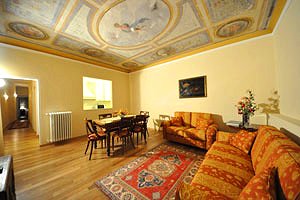 Apartment in the historical centre of Florence a few steps away from the Accademia Gallery. Nearby Piazza Duomo, Piazza Signoria, the Uffizi Gallery . 5+2 beds, Internet Connection and air conditioning.
More details
Apartment in the historical centre of Florence a few steps away from the Accademia Gallery. Nearby Piazza Duomo, Piazza Signoria, the Uffizi Gallery . 5+2 beds, Internet Connection and air conditioning.
More details




 Holiday apartments in pretty villa on the southern outskirts of Florence, in the vicinity of Piazzale Michelangelo. Accommodation for groups of 4/6/8/10/12 people. Air conditioning, Internet connection. Just a few minutes from Florence historical centre.
More details
Holiday apartments in pretty villa on the southern outskirts of Florence, in the vicinity of Piazzale Michelangelo. Accommodation for groups of 4/6/8/10/12 people. Air conditioning, Internet connection. Just a few minutes from Florence historical centre.
More details
 Beautiful apartment sleeping 6+2 in Florence historic centre, at a stone`s throw from Santa Maria Novella railway station. Air conditioning, Internet connection and panoramic balcony with view over the Duomo and the Medici Chapels.
More details
Beautiful apartment sleeping 6+2 in Florence historic centre, at a stone`s throw from Santa Maria Novella railway station. Air conditioning, Internet connection and panoramic balcony with view over the Duomo and the Medici Chapels.
More details
 Apartment sleeping 2+1 in the heart of Florence historic centre, in the district of Santa Croce. Panoramic balcony with view over the basilica of Santa Croce, air conditioning, Internet connection, close to the most important Florentine monuments.
More details
Apartment sleeping 2+1 in the heart of Florence historic centre, in the district of Santa Croce. Panoramic balcony with view over the basilica of Santa Croce, air conditioning, Internet connection, close to the most important Florentine monuments.
More details
 Apartment in the historical centre of Florence a few steps away from the Accademia Gallery. Nearby Piazza Duomo, Piazza Signoria, the Uffizi Gallery . 5+2 beds, Internet Connection and air conditioning.
More details
Apartment in the historical centre of Florence a few steps away from the Accademia Gallery. Nearby Piazza Duomo, Piazza Signoria, the Uffizi Gallery . 5+2 beds, Internet Connection and air conditioning.
More details







